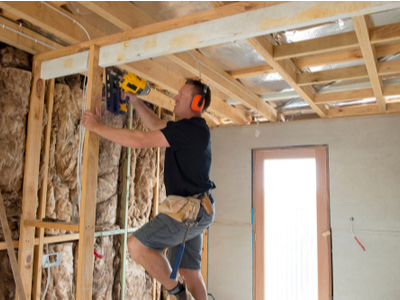
5 Pricing Mistakes Builders Make Everyday
Construction pricing has gone totally nuts. But builders regularly make these 5 pricing mistakes, causing them to lose 10’s of thousands of dollars each year. See 5 pricing mistakes & how you can avoid them.
.
It’s no wonder so many builders have recently experienced a cashflow crises.
COVID, government grants, suppliers price rises, labour shortages and now interest rate rises have all driven unprecedented price rises in build costs.
So how do you protect yourself from pricing ‘mistakes’ that cost builders $10,000+ on almost every job they do?
Check out the top 5 pricing mistakes builders make – and how to fix them.
Mistake 1: Builders Don’t Factor In the Job Source
Did the job come from an architect/designer, direct client enquiry or a developer/investor?
Each has their own unique requirements and should be priced accordingly.
For example, architects/designers will refer work to you because they trust you to deliver on their design intent – and that requires fair compensation to deliver their requirements.
A direct client enquiry, however, will likely be more price sensitive and less discerning about the final build product.
Finally, a developer or investor is often a seasoned operator who’s looking for value – that is a specified quality for a competitive price.
From Builders’ data across the country, we know the job source can effect pricing by as much as 20%. So, ProCalc calculations incorporate the source of the work. See how with a free trial.
Mistake 2: Builders Treat All Clients the Same
Let’s face it, client behaviour can make or break a project…and your cashflow!
Clients who need extra support, and have lots of questions, need more of your time each week than a client who trusts you and is happy for you to run the show.
Assess each client for how much of you time they’ll need each week of the project. If you think they’ll need extra support, estimate the hours and include them in your quote figures. Book a free trial to see how ProCalc addresses this.
Mistake 3: You Overlook the Nuances of Contract Type (& Obligations)
Some contracts, such as ABIC, require you to produce more paperwork, wait for retention payments and hand over stage payment approvals to a 3rd party. Or, your contract might allow for liquidated damages.
The more risk, financial delay, management, etc a contact dictates, the more you need to cover yourself.
Keep it professional by calculating the extra hours you’ll spend or the interest costs on delayed retention payments and ensure they’re included in your contract price. ProCalc does this automatically – see how with a free trial.
Mistake 4: You Charge the Wrong Margin for Your Type of Work
A builder working in a regional city on project builds will charge a much smaller margin than a builder working on tight inner metro sites for architectural renovations.
In our research, we’ve seen margins between 13% and 33% according to project type & builder.
Yep…ProCalc considers that too.
Mistake 5: Charging the Same Margin for All Jobs
Consider a $1M job vs a $300k job.
Whilst they’re dramatically different sized jobs, both require roughly the same management effort from you.
If you take on the $300k job, will it mean a $1M job will need to wait?
The point is, try to explore generating consistent profits across all jobs.
If you calculate a profit of $100k on the $1M job, could you raise your margin to get a similar $100k profit on your $300k jobs (or at least push towards it)? Find your sweet spot.
Would you like to compare your pricing to other builders?
We interviewed hundreds of builders across the country and assessed thousands of their estimates.
ProCalc’s online calculations mimic the marketplace to help builders (and their clients) understand the likely cost BEFORE you invest your valuable time in their project.
A ProCalc report takes just 15 minutes from your desktop.
If you’re serious about your building business (and your future) book a free ProCalc trial here.
You might also like:
- Builders, Get Your Pricing Right Every-time – No More Under-Quoting
- Transform Your Building Business in 43 Mins (webinar)
- How (& Why) to Charge for First Client Meetings
- Take a Free Trial of ProCalc
- Stop All Free Client Meetings – Charge Upfront
- Want more tips like these? Attend the Webinar: Work Smarter, Not Harder

Richard Armstrong is a former registered builder who recently interviewed hundreds of experienced Australian builders to identify how they best manage clients, budgets and profitability.










